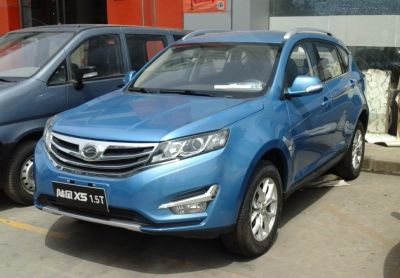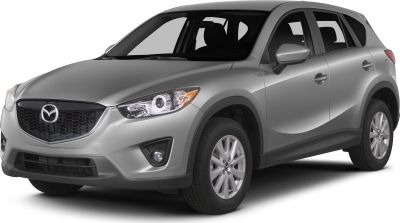 2016 Ford Kuga II (facelift 2016) Dimensions, Size & Specs
2016 Ford Kuga II (facelift 2016) Dimensions, Size & SpecsMeasurements of the 2016 Ford Kuga II, engineered for optimal performance and comfort
| Dimensions | |
|---|---|
| Length: | 4531 mm178.4 in14.9 ft |
| Width: | 1838 mm72.4 in6.0 ft |
| Width (Folded Mirrors): | 1911 mm75.2 in6.3 ft |
| Width (Opened Mirrors): | 2086 mm82.1 in6.8 ft |
| Height: | 1703 mm67.0 in5.6 ft |
| Trunk Capacity: | 456 liter16.1 cu ft |
| Trunk Capacity (Max): | 1603-1653 liter56.6-58.4 cu ft |
| Weight Specifications | |
| Curb Weight: | 1579-1716 kg3481-3783 lbs |
| Maximal permitted Weight: | 2100-2250 kg4630-4960 lbs |
| Roof Load: | 75 kg165 lbs |
| Tire Specifications | |
| Rims Sizes: | 17-inch rims:
|
| Tire Sizes: |
|
The Ford Kuga II facelift, produced from 2016 to 2019, is a mid-size SUV perfectly balancing style, functionality, and spaciousness. Measuring 4,531 mm (178.3 inches) in length, 1,838 mm (72.3 inches) in width excluding mirrors, and standing 1,703 mm (67.0 inches) tall, the Kuga II offers a compact yet roomy footprint ideal for both city driving and family adventures. When including the mirrors, the width ranges between 1,911 mm (75.2 inches) with folded mirrors and a full 2,086 mm (82.1 inches) with opened mirrors, providing clear guidance on parking and garage space requirements. The curb weight varies from 1,579 to 1,716 kg (3,481 to 3,783 lbs), reflecting different trims and optional equipment, while the maximum permissible weight spans from 2,100 to 2,250 kg (4,630 to 4,960 lbs). One of the highlights of the Ford Kuga II facelift is its versatile luggage capacity, offering 456 liters (16.1 cubic feet) behind the rear seats for everyday needs, expandable to 1,603 to 1,653 liters (56.6 to 58.4 cubic feet) when the rear seats are folded down, making it ideal for larger cargo or active lifestyle gear. The SUV supports a roof load of up to 75 kg (165 lbs), accommodating roof racks and carriers for additional storage. It rides on rims sized from 7.5 J x 17 and 18 inches paired with tire sizes 235/55 R17 and 235/50 R18, ensuring a stable yet comfortable ride. This generation of the Ford Kuga remains a popular choice among SUV enthusiasts seeking a practical vehicle with balanced dimensions and strong cargo solutions.
Discover the standout features that make the 2016 Ford Kuga II a leader in its class
Have a question? Please check our knowledgebase first.
The Ford Kuga II facelift (2016-2019) has a length of 4531 mm (178.3 inches), a width of 1838 mm (72.4 inches) without mirrors, and a height of 1703 mm (67 inches). These dimensions position the Kuga as a compact SUV, providing a balance between interior space and urban maneuverability.
The width of the Ford Kuga II facelift varies depending on the position of the side mirrors. With the mirrors folded, the width measures 1911 mm (75.2 inches), while with the mirrors opened, it extends to 2086 mm (82.1 inches). This information is particularly useful for assessing parking space requirements and garage fitment.
The Ford Kuga II facelift weighs between 1579 kg and 1716 kg (3482 to 3782 pounds), depending on the specific trim and equipment. This weight range supports a solid on-road presence without compromising agility, contributing to stable handling and comfort typical for a compact SUV of its class.
The Ford Kuga offers practical cargo space with a luggage capacity of 456 liters (16.1 cubic feet) when the rear seats are up. Folding the rear seats expands the capacity significantly to between 1603 and 1653 liters (56.6 to 58.3 cubic feet), providing versatile options for transporting larger loads or bulky items.
The roof load capacity of the Ford Kuga II facelift is rated at 75 kg (165 pounds). This means you can safely install and carry roof racks, cargo boxes, or bikes within this weight limit without compromising vehicle safety or handling, thus expanding the vehicle's versatility for outdoor activities or travel.
Given its length of 4531 mm (178.3 inches), width of 1838 mm (72.4 inches) without mirrors, and height of 1703 mm (67 inches), the Ford Kuga II facelift generally fits comfortably within a standard single-car garage, which typically measures around 2438 mm (96 inches) wide by 4877 mm (192 inches) deep. However, with mirrors unfolded (2086 mm or 82.1 inches), care is needed to accommodate width, especially in tighter garages. Folding the mirrors can help ensure easy garage entry and exit.
Compared to the first-generation Kuga, the facelifted Ford Kuga II (2016-2019) increased slightly in size, particularly in length and width, contributing to enhanced interior space and cargo capacity. While exact predecessor dimensions vary, the facelifted model's increase in size improved occupant comfort and practicality without compromising its compact SUV agility. Additionally, updates in styling and technology marked a clear evolution over the earlier generation.
The Ford Kuga II facelift holds its own against competitors like the Volkswagen Tiguan and Nissan Qashqai. Dimensionally, its length of 4531 mm (178.3 inches) and width of 1838 mm (72.4 inches) are comparable, offering a competitive footprint. Its luggage capacity of 456 liters (16.1 cubic feet) standard and up to 1653 liters (58.3 cubic feet) with rear seats folded is in line or slightly better than many rivals, making it a practical choice for families and those needing flexible cargo space.
The Ford Kuga II facelift typically comes equipped with tire sizes of 235/55 R17 and 235/50 R18, matched to rim sizes of 7.5 J x 17 and 7.5 J x 18 respectively. These sizes ensure a good balance between ride comfort, handling, and aesthetic appeal. Upgrading within these specifications can optimize performance or style without affecting safety and vehicle operation.
The maximum weight or gross vehicle weight (GVW) for the Ford Kuga II facelift ranges between 2100 kg and 2250 kg (4629 to 4960 pounds), depending on the variant. This weight limit includes the vehicle itself, passengers, cargo, and any additional load. Staying within this range ensures safe operation and compliance with manufacturer guidelines, affecting the total allowable payload and influencing factors like braking and handling.
Discover similar sized cars.

| Model Year: | 2010 |
|---|---|
| Length: | 4570 mm179.9 in |
| Width: | 1855 mm73.0 in |
| Height: | 1685 mm66.3 in |

| Production: | 2014-present |
|---|---|
| Model Year: | 2013 |
| Length: | 4568 mm179.8 in |
| Width: | 1855 mm73.0 in |
| Height: | 1710 mm67.3 in |

| Production: | 2019-present |
|---|---|
| Model Year: | 2020 |
| Length: | 4544 mm178.9 in |
| Width: | 1831 mm72.1 in |
| Height: | 1713 mm67.4 in |

| Model Year: | 2015 |
|---|---|
| Length: | 4565 mm179.7 in |
| Width: | 1830 mm72.0 in |
| Height: | 1720 mm67.7 in |

| Production: | 2017-2021 |
|---|---|
| Model Year: | 2017 |
| Length: | 4550 mm179.1 in |
| Width: | 2116 mm83.3 in |
| Height: | 1680 mm66.1 in |

| Production: | 2015-2017 |
|---|---|
| Model Year: | 2015 |
| Length: | 4555 mm179.3 in |
| Width: | 2168 mm85.4 in |
| Height: | 1710 mm67.3 in |

| Production: | 2012-2015 |
|---|---|
| Model Year: | 2013 |
| Length: | 4555 mm179.3 in |
| Width: | 1840 mm72.4 in |
| Height: | 1710 mm67.3 in |

| Production: | 2009-2012 |
|---|---|
| Model Year: | 2008 |
| Length: | 4528 mm178.3 in |
| Width: | 2016 mm79.4 in |
| Height: | 1689-1699 mm66.5-66.9 in |
